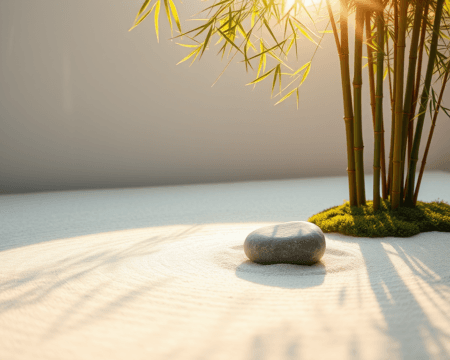One afternoon, while sitting at a chaotic café filled with the aroma of fresh coffee and the sound of people chatting, I realized something. We all have a unique voice we want to express, but for many, it feels like trying to scream underwater—frustratingly muffled. Whether it’s to share your creativity, your feelings, or just your thoughts, finding that personal expression can be tough.
Here’s the scoop: Your voice matters, and it’s time to bring it to the surface. Let me share some of the strategies that have genuinely helped me and countless others tap into authentic self-expression.
Key Takeaways
- Embrace your uniqueness. Recognize that your perspective is your power.
- Experiment with different mediums. Creativity takes many forms; don’t be afraid to play around.
- Create consistency. Developing a regular practice can help you break through mental barriers.
- Engage with others. Sharing your work can bring invaluable feedback and support.
- Celebrate your progress. Acknowledging small milestones fuels motivation.
Embrace Your Unique Perspective
When I began to embrace my individuality, everything changed. I was no longer trying to fit into someone else’s mold. Instead, I learned that my personal insights were golden nuggets waiting to be shared. Think about it: you have experiences and viewpoints that no one else can replicate. In a world buzzing with noise, your unique voice is like a bright beacon.
How to Cultivate Self-Awareness
At times, we get lost in the hustle, right? To really know what makes us tick, we need to engage in some self-reflection. I started journaling, and it’s been a total game changer. Grab a blank notebook, throw on your favorite playlist, and let your inner dialogue flow.
Diving into mindfulness and meditation made me realize how my thoughts and emotions shaped my expression. Simple practices like a daily five-minute meditation can clarify your mind and create space for self-discovery. Plus, it’s like a mental health boost.
“Self-awareness isn’t just a buzzword; it’s clarity in chaos.”
Finding Inspiration in Everyday Life
Everything around us can be a source of inspiration. Whether it’s a sunset, the laughter of children in the park, or a random conversation in the line at the grocery store, there’s a creative spark in the mundane. Try to cultivate situational awareness; allow yourself to soak in what’s happening around you. Make observation a habit.
You can also find creative triggers through storytelling, even if you think your life is boring—trust me, the most mundane moments can become fascinating narratives. Take a moment to jot down experiences from your day; you’ll be surprised how profound they can be when viewed through a different lens.
Explore Different Modes of Expression
If I had a dime for every time someone told me they couldn’t dance, act, or write, I’d be rich! Let’s break that down: creativity isn’t a one-size-fits-all deal. Exploring various forms of expression can help you connect with what resonates most deeply.
Engaging with Art and its Therapeutic Benefits
You might not feel like Picasso or a Shakespearean playwright, but that’s not the point! Engaging with art—whether it’s through painting, music, or dance—can serve as a healthy outlet for emotions. I attended a few art therapy workshops (don’t knock it ’til you try it), and it was eye-opening.
Imagine painting as a form of emotional release; the canvas becomes a reflection of your innermost feelings. There are even affordable painting classes, like Painting with a Twist (around $35 per session), that you can attend with friends to unleash your creativity.
Trying Out New Creative Outlets
Throw yourself into a plethora of hobbies—it’s all about experimentation. I picked up blogging a couple of years ago, and while I stumbled a lot at first, it turned into a rewarding journey.
Consider trying:
– Playing an instrument like the ukulele, with models starting around $50—it’s fun and a fantastic conversation starter.
– Starting a DIY project, perhaps with products from Home Depot or your local craft store; you’ll learn new skills while satisfying your creative itch.
– Joining a dance class, even if it’s just beginner salsa, because stepping out of your comfort zone can lead to surprising new pathways.
Develop a Regular Creative Practice
Let’s be real for a second—consistency beats talent every. single. time. Developing a regular creative routine can eradicate those pesky doubts that creep in when you begin to create.
Setting Up a Creative Space
Setting up an inspiring workspace can totally change your vibe. I made my own creative corner at home—think cozy lighting, a comfy chair, and an inspiration board filled with everything from quotes to dream goals. It doesn’t have to be fancy or expensive, just functional and inviting.
Implementing Daily Art Exercises
There’s no shortcut. Like muscle growth, creativity strengthens with practice. Commit to daily art exercises—this can be as simple as sketch prompts, creative writing challenges, or brainstorming sessions.
Try this:
– Choose a specific time each day—30 minutes, maybe? I usually do it over my morning coffee or late at night.
– Feed your mind with resources like The Artist’s Way, which offers fantastic exercises for daily creativity.
Even if not every day leads to a masterpiece, each effort adds up.
Share Your Work with Others
I know it can be terrifying to lay your work bare for others to see. But sharing is pivotal; it fosters connection and growth.
Seeking Constructive Feedback
Find communities where you can safely share your work for honest feedback. Whether it’s through social media, local writers’ groups, or even online forums—making those connections can lead to insightful critiques you never expected. I once joined a painting group that provided feedback on our art pieces, which led to significant improvement in my technique.
Building a network doesn’t just help you grow; it creates a supportive environment. Make it a point to attend local art show openings or community workshops.
“Art is a reflection, and feedback sharpens that reflection into clarity.”
Building a Supportive Network
Get involved! Surround yourself with like-minded individuals who share your creative passion. Whether it’s joining a book club, attending creative conferences, or connecting on social platforms like Instagram or Pinterest, a supportive network will push you to sharpen your skills.
Check out websites like Meetup.com to find groups in your local area based on your interests—there’s something for everyone!
Reflect on Your Emotions
Don’t underestimate the power of emotional clarity. How can you express yourself fully if you don’t understand your feelings?
Keeping a Journal for Emotional Clarity
I keep a journal (yes, like you might have done in middle school) to process my daily emotions. It’s cathartic. I jot down my thoughts, experiences, and how I felt about them. I’ve found it’s truly enlightening to look back at previous entries and see what I’ve overcome.
Combining this with self-monitoring techniques can lead to emotional awareness and personal insights.
Using Art to Process Emotions
Art isn’t just about aesthetics; it’s a powerful way to navigate complex feelings. When words fail, paint, draw, or create. Sometimes, just splashing colors on a canvas can be a cathartic release. Use color symbolism to channel your emotions into visual representations.
Have you ever noticed how certain colors make you feel? I like to keep a variety of colored markers and paints handy, so I can grab them when I need to express my mood.
Break Through Creative Blocks
We all hit creative blocks—those days when inspiration feels like a distant memory. It sucks. But you don’t need to stay stuck!
Identifying Triggers for Blocks
Pay attention when those blocks hit. Are they triggered by stress, fear, or perhaps anxiety? Recognizing what stops your creativity is the first step in dismantling those barriers. Honestly ask yourself what you feel; sometimes, self-doubt can be the heaviest chain.
Strategies to Reignite Creativity
Engage in brainstorming techniques—try changing your surroundings or doing something physical to reset your brain. I often rely on working out; it promotes endorphin release and can shift your mood entirely.
You can also utilize apps like MindNode for mind mapping, which can take your creative thoughts and scatter them out visually across the screen—no pressure, just ideas.
| Creative Block Solution | Benefits |
|---|---|
| Meditative Breathing | Reduces anxiety and clears mind |
| Mind Mapping Apps | Organizes thoughts visually |
| Physical Activity | Energizes body, increases flow |
Celebrate Your Progress
Let’s finish strong! Acknowledging growth—no matter how small—is crucial.
Strategies for Celebrating Small Wins
What works for me is tracking my achievements. I set personal benchmarks and when I hit them, I celebrate—sometimes, it’s a simple treat like my favorite donut or binge-watching a show guilt-free.
Implement a reward system for yourself. Realize that every step in your self-expression journey is worth celebrating!
Creating a Visual Progress Board
I swear by creating visual reminders—like a vision board—to keep me motivated. I fill it with images and quotes that inspire me. It’s a constant reminder of how far I’ve come and of where I want to go.
This can be a corkboard filled with your artistic projects, or even a digital version you can refer back to whenever you’re feeling low on motivation.
In this vibrant journey of self-expression, it’s about making your voice heard, cherishing your uniqueness, and connecting with others. You’ve got this! So, what are you waiting for? Let that voice shine bright!
Frequently Asked Questions
How can I find my unique voice in creative expression?
Finding your unique voice involves embracing your individuality and personal experiences. Engage in self-reflection, practice mindfulness, and explore various creative outlets that resonate with you. Journaling your thoughts can also clarify your feelings and insights.
What are some effective ways to explore different modes of expression?
Consider trying multiple art forms such as dance, painting, writing, or music. Attend workshops, join classes, or participate in community projects to discover what feels most authentic to you. Experimentation is key to finding your preferred means of expression.
How often should I practice my creative skills?
Establishing a regular creative routine is beneficial. Aim for daily or weekly practice, dedicating time to honing your skills. Consistency helps develop discipline and can significantly enhance your creative capabilities over time.
What should I do if I feel overwhelmed when sharing my work?
Feeling overwhelmed is common. Start by sharing your work with trusted confidants or in small, supportive groups. Seek constructive feedback and focus on the joy of sharing rather than perfection, gradually building your confidence.
How can journaling help with emotional clarity?
Journaling fosters emotional clarity by allowing you to articulate feelings and thoughts. It encourages self-reflection and personal insight, providing a space to process emotions and navigate life’s challenges through written expression.
What strategies can help me overcome creative blocks?
To overcome creative blocks, identify your triggers and adjust your environment. Engage in brainstorming techniques, physical activities, or new experiences that inspire creativity. Taking breaks and allowing space for ideas to flow is also vital.
How do I celebrate my progress without getting complacent?
Celebrate your progress by acknowledging small wins and setting new goals. Create a visual progress board to track your achievements and remind yourself of your journey. This keeps you motivated and engaged without losing sight of future aspirations.
What is the importance of emotional expression in creativity?
Emotional expression is crucial in creativity as it leads to authenticity in your work. It allows you to connect deeply with your audience, providing a reflective outlet that enhances both personal growth and artistic endeavors.
How can I build a supportive creative community?
To build a supportive community, engage with like-minded individuals through local workshops, online forums, or social media groups. Networking and collaborating can lead to enriching relationships that foster creativity and provide essential feedback.
What are some tips for setting up an inspiring creative space?
Create a dedicated creative space that reflects your style and encourages productivity. Incorporate inspiration boards, comfortable seating, and good lighting. Organize your tools and materials to create an environment that nurtures creativity and focus.










